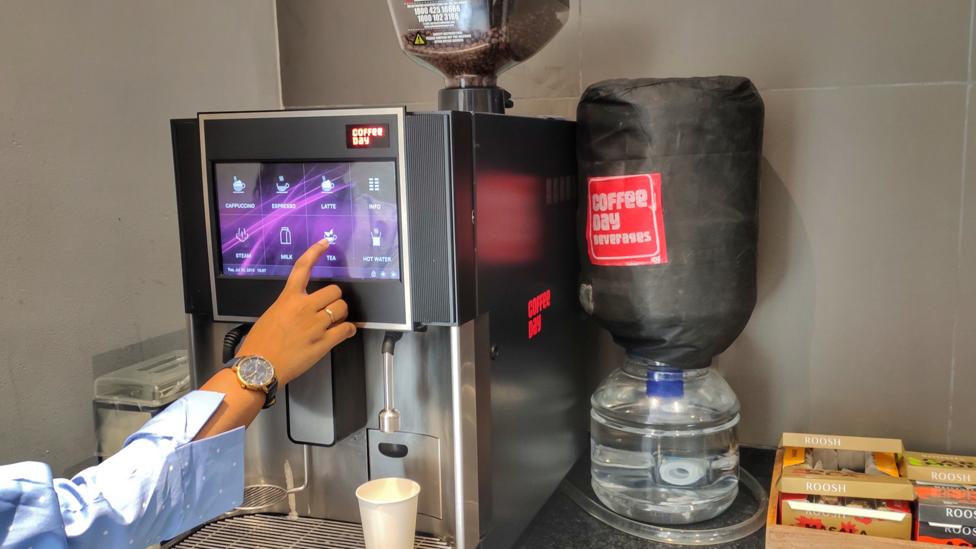Banning work in centralised offices isn’t just a precaution – offices have been, and are, prime sites for the spread of viruses and bacteria. You’re likely familiar with cycle: every season, a bug will go around. One person will arrive at the office – sneezing, coughing – and will pass on whatever virus they have to their colleagues. And the cycle will continue. Every season, a bug will go around. You know what comes next.
Researchers have shown that bugs, germs, viruses and bacteria spread easily in an office. Krissi Hewitt, director of institutional research and strategic initiatives at North Carolina School of Science and Mathematics, has researched the diversity and abundance of microbial life in offices.
“People spend a large amount of their daily life in the confines of the office where shared spaces and high interaction with shared surfaces increases the amount of microbes on surfaces and in the air,” she says.
In other words, many of the high-touch areas in your office could be vectors for the spread of virus. And the more colleagues that touch them, the higher the risk of contamination. Jonathan Sexton, a researcher at the College of Public Health at the University of Arizona, found that places such as refrigerators, drawer handles, faucet handles, push-out exit doors and coffee pots tend to have the highest concentrations of germs.

Refrigerators, drawer handles, faucet handles, push-out exit doors and coffee pots tend to have the highest concentrations of germs. (Credit: Getty Images)
And they travel quickly, according to a study from the American Society for Microbiology. Researchers placed a sample of a harmless virus on a single doorknob or table-top in an office building. The first area that was contaminated was the coffee break room, says study researcher Charles Gerba, a microbiologist at the University of Arizona. Within two to four hours, the virus could be detected on 40% to 60% of workers, visitors and commonly touched objects.
Poor hygiene from office workers can exacerbate to this, too: a 2019 UK survey showed that only 61% of UK office workers washed their hands properly with warm water and soap after going to the toilet.
A virus in the air
Dirty fingers and desks are one thing, but the biggest risk for the spread of virus is what’s travelling through the air.
“The great risk is not from the [office] building but from sick employees,” says Dr Ali Khan, an epidemiologist and professor at the College of Public Health UNMC at the University of Nebraska. “If one person is sick, he or she could spread the germs through coughing and sneezing, touching surfaces and contacting others closely. Even staying at their private desks, germs can also be spread by the flying droplets which settle on any surface and cause contamination”.
The circulated air of offices can also contribute to the spread of microbes. Hewitt says that in indoor environments, microbial life is circulated through the air and within HVAC systems.
“Maintenance of systems and filtration has an impact on how contaminants flow through the air, so buildings that have not been properly serviced to maintain appropriate circulation, filtration, humidity and temperatures can contribute to higher amounts of microorganisms moving through the systems,” she says.
Just keep washing
The home offices in which so many of us are now working are more controlled environments with fewer people and fewer touched surfaces, says Lisa Ackerley, a chartered environmental health practitioner and deputy chair of International Scientific Forum on Home Hygiene. You won’t be surrounded by all of the shared places colleagues are touching or exposed to their droplets, nor will you have to be leery of their poor hygiene contributing to the spread.
But, if you head outside you can still bring the virus into your home while working remotely if you’re not diligent. “The virus cannot spontaneously grow in your home. It must be brought in by an infected human,” says Khan. That means coming in contact with someone who is sick or touching an infected surface, then transferring it to your surfaces at home.
Even if the virus is on your hands, you have to somehow bring it in to your body to get sick
Remember, however, that the only way viruses grow are within bodies, which means you have to bring the germs into your body – often via touching your face – in order to get sick. This goes for coronaviruses, including Covid-19: even if the virus is on your hands, you have to somehow bring it in.
That’s why it’s so important that, no matter whether you’re working in a shared office or at home, you need to prioritise sanitisation. Of course, there will be fewer high-touch surfaces in your own home and no colleagues to touch them. But if the germs enter your environment, you can contract the virus regardless.
On a positive note, when you do head back into your shared office environment, you shouldn’t be scared that another pandemic will originate at your desk. It’s highly unlikely that the next pandemic will arise from an office, says Khan, who is also author of The Next Pandemic.
“No, the next pandemic will not arise in our offices. It will again arise in the wild. Offices and other places with population density will be good places to spread the disease,” he says.
Still, it’s a good idea – no, a great one – to keep washing your hands no matter what.
With contributions by Manyu Jiang
 info@businessghana.com
info@businessghana.com


















